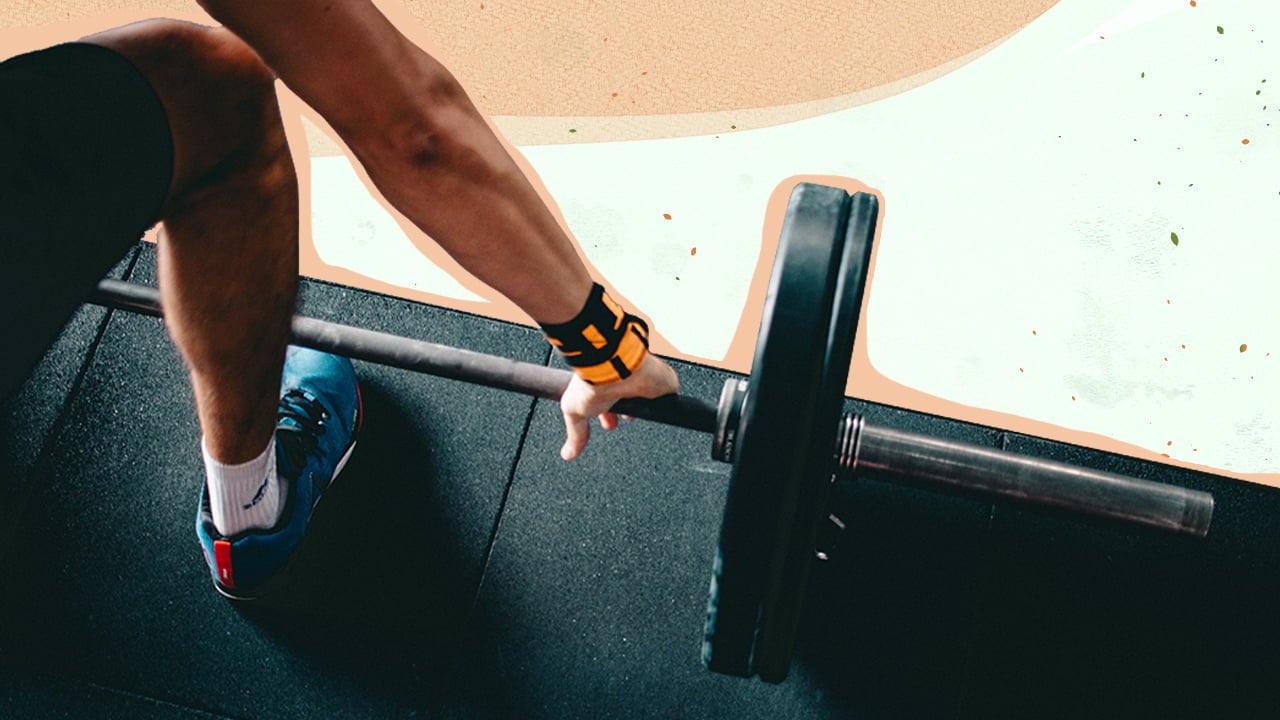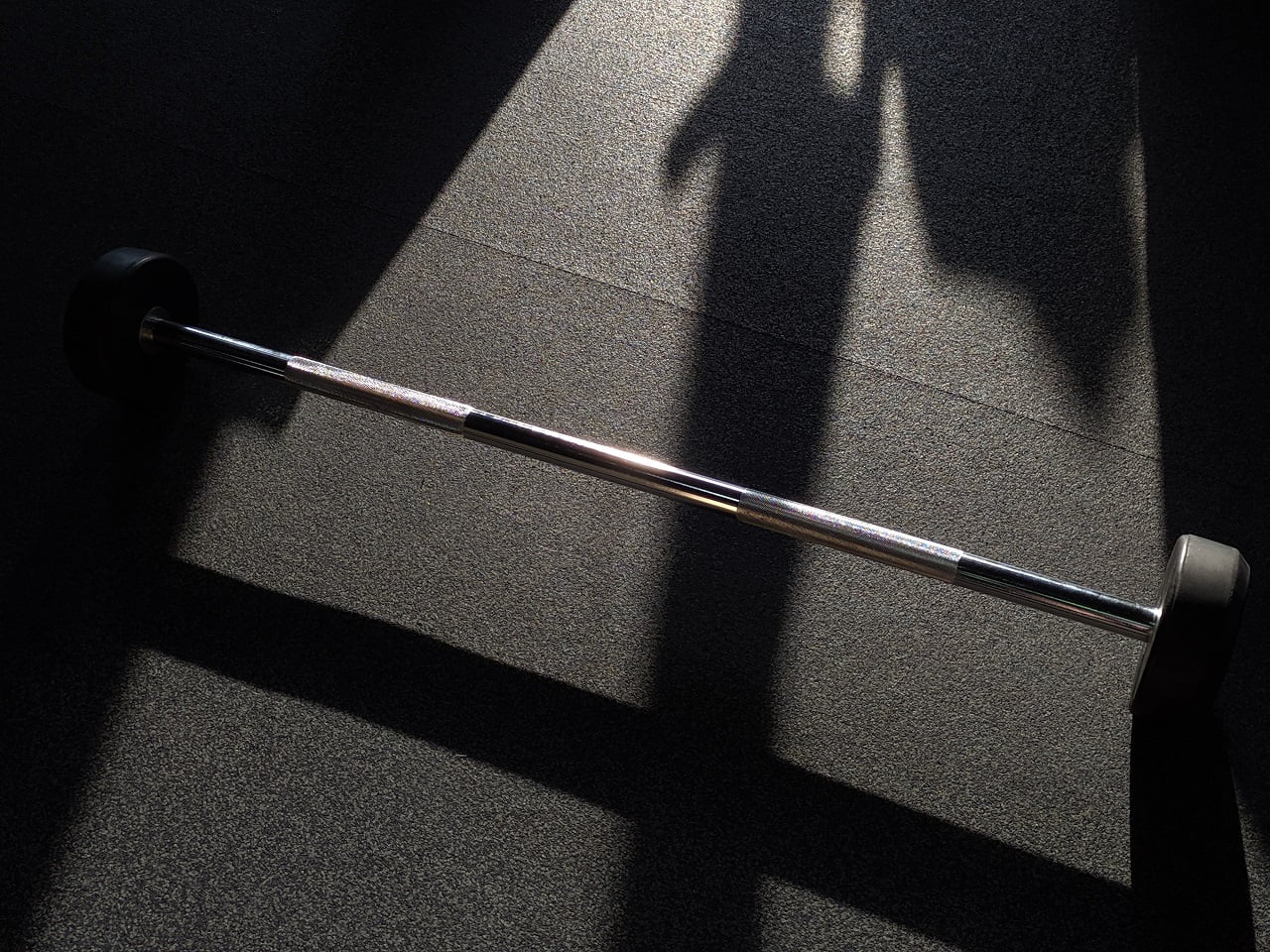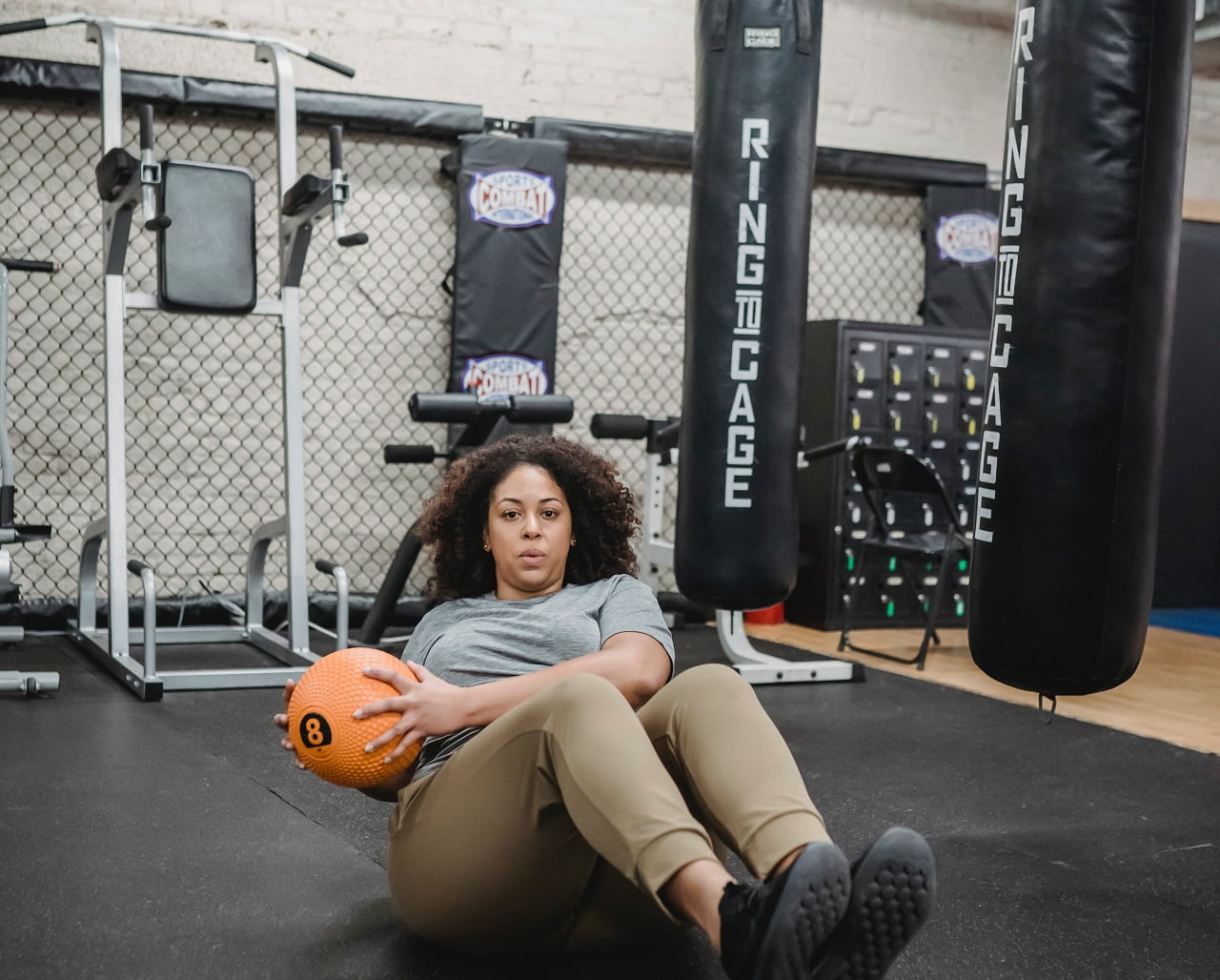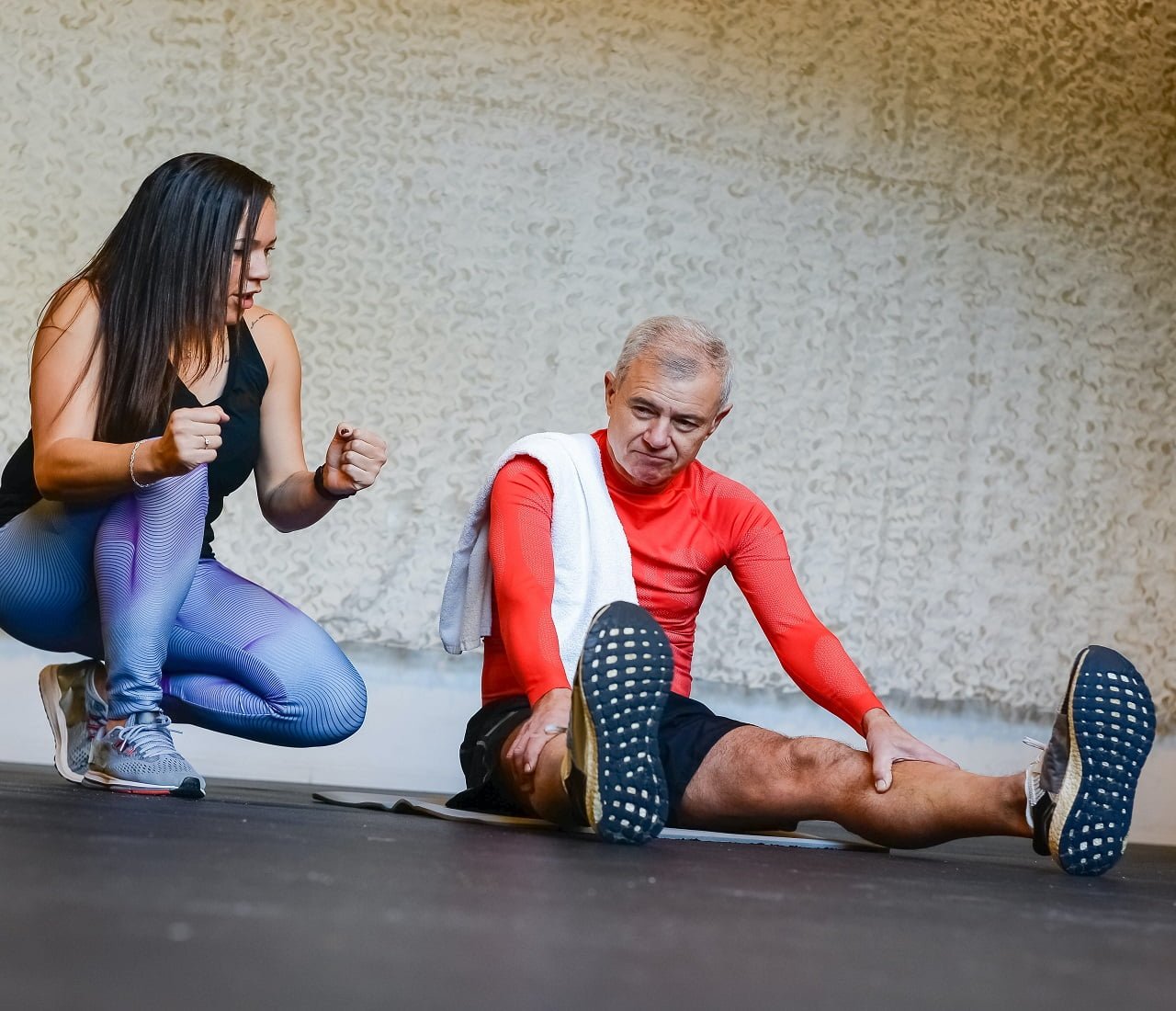How To Soundproof A Home Gym | Gym Noise Reduction
You can make your home gym quiet by laying rubber mats or interlocking mats all over the flooring to prevent noise transfer. Even installing acoustic panels and replacing iron equipment with rubber-coated instruments will muffle noise. One of the luxuries of owning a home gym is that you can work out at any time of […]

You can make your home gym quiet by laying rubber mats or interlocking mats all over the flooring to prevent noise transfer. Even installing acoustic panels and replacing iron equipment with rubber-coated instruments will muffle noise.
One of the luxuries of owning a home gym is that you can work out at any time of the day.
However, the loud sound of re-racking dumbbells and dropping heavy weights can be a nuisance for your neighbors. No matter the time of day you work out, making your home gym quieter should be your priority.
I’ve discussed a few tried-and-tested ways to soundproof a home gym, so let’s get straight to the deets!
Source Of Noise In A Home Gym

Before learning how to soundproof a home gym, it’s essential to understand what’s making the noise. Whichever soundproofing material you use for home gym noise reduction depends largely on the noise source.
Similar to commercial gyms, the two sources of noise in home gyms are dropping weights and loud music.
1. Dropping Heavy Weights
Whenever you drop weights on the gym floor, the weight plate creates a loud noise. However, the intensity of the noise depends to a large extent on the types of plates and the flooring.
Rubber bumper plates are less noisier than cast iron ones, so you can opt for the former to reduce noise in your home gym.
As for flooring, rubber flooring is better than concrete floors. That’s because anything dropped on rubber won’t generate as loud a noise as it would on a concrete floor.
Dropping heavy weight training equipment like a kettlebell, dumbbell or barbell creates noise in two ways. First is a direct impact, which leads to vibrations in the barbell and dumbbells but since this isn’t a high-pitch noise, it doesn’t travel a long way.
Other than direct impact, dropping heavy gym equipment causes vibrations on the floor. Like every flooring, there’s a little bit of flex in the gym flooring, which is why the floor shifts slightly, causing vibrations. Within a few seconds, the vibrations are transmitted throughout the entire structure of your home.
2. Loud Music
Many gym enthusiasts are fond of listening to music at full volume in stereo speakers rather than headphones while working out. While you may enjoy your time at the gym, the loud music will be a source of discomfort for others.
To eliminate sound transfer, you will either have to listen to music through headphones or soundproof your gym to avoid disturbing your neighbors and family members.
Noise Insulation Vs Sound Deadening?
Contrary to what people say, sound deadening and noise insulation are different.
Noise insulation refers to the strategies adopted to prevent sound from entering or escaping a room. On the other hand, sound deadening is the technique to keep sounds from bouncing within a room.

How To Soundproof A Home Gym: 16 Best Soundproofing Techniques
1. Lay Rubber Mats Over Your Gym Floor
Weightlifting equipment like dumbbells, barbells, and kettlebells generate a loud noise when dropped on gym floors. Besides noise, weightlifting equipment can damage the flooring, causing it to crack and chip.
In this regard, I recommend every home gym owner lay thick rubber mats over the gym flooring. Thick rubber mats absorb sound, especially impact noise, while protecting the flooring from damage due to dropping weights.
Apart from sound absorption, rubber mats prevent noise from echoing in the gym. Installing rubber mats is a fairly easy process– measure the floor and lay them on the flooring of your gym, especially near the weightlifting platform or weightlifting racks.
Instead of regular rubber mats, I prefer interlocking floor mats, which are one-and-a-half inches thick, meaning they are highly durable. But all those dropping serious weight or using Olympic weightlifting equipment must go for mats that are 3/4-inch thicker.
As these are made of tire crumb, they are anti-slip and highly durable, making them safe for weightlifting.
2. Install Acoustic Panels On The Walls And Ceiling To Reduce Echo
Acoustic panels reduce echo and reverberation in a space, which is why they are a popular option for garage gym spaces.
If you install acoustic panels on the walls and ceilings, they will prevent noise from escaping the space and reduce echo to a great extent. Since they improve the overall sound quality of a space, you can record instructional fitness videos in your gym without any interruptions.
Don’t forget to leave a two-inch gap between the panel and the finished ceiling when installing acoustic panels. That’s because they absorb sound waves if you hang them slightly lower than the roof.
Tip
Moving blankets are an excellent alternative to acoustic panels because they are relatively affordable. However, they are slightly heavy, so I suggest using nails to install them in your gym space. For maximum sound insulation, you must layer the blankets to reduce the noise level considerably.
3. Use Rubber-Coated Kettlebells, Dumbbells, And Plates
Cast iron free weights make more noise when placed on weight racks than those that are coated with rubber. Not just that, but they also resonate much louder against hard surfaces, creating unnecessary noise.
To make your gym quiet, I suggest adding rubber-coated dumbbells, rubber-coated plates, and barbells to your space. Rubber coating reduces sound to a great extent, so your gym equipment won’t create unnecessary noise when you re-rack them.
Another benefit of using rubber dumbbells, plates, and barbells is they keep your floor protected from cracking and chipping. Opt for rubber dumbbells in hexagonal shape when buying dumbbells because they won’t roll down the weight rack or flooring.
Also, most brands sell gym equipment made of recycled rubber at throwaway prices. Although the cheap price may lure you into purchasing them, I suggest going for natural rubber-coated equipment because they tend to last longer.
4. Add Mass To The Bare Walls Of Your Gym
Adding mass to the walls of your gym will make them thicker, which means noise won’t escape from the space. When it comes to walls, there are numerous ways to soundproof them, including:
A. Use Mass-Loaded Vinyl
Mass-loaded vinyl, or MLV, is one of the best soundproofing materials because of its thickness and density. When MLV barriers are applied to walls made of wood or drywall, they prevent noise transfer and reduce vibrations.
B. Install Soundproof Drywall
Another effective way to add mass to the walls is to install soundproof drywall. Manufacturers of such products claim that one sheet of drywall provides the same soundproofing as layers of standard drywall.
C. Fit Sheetrock At The Back Of The Drywall
Installing sheetrock behind the drywall will minimize sound transfer because it absorbs most of the sound energy. This way, you can work out peacefully in your home gym without worrying about disturbing others.
D. Hang Fiberglass Panels
When it comes to adding mass to the walls, fiberglass panels also work well to prevent noise transmission while guaranteeing maximum soundproof insulation.
5. Decorate The Walls
Don’t have time to install acoustic panels or soundproof drywall in your space? Decorating your gym walls can soundproof your space without costing a ton.
In spaces where sound bounces way too much, sound deadening strategies prevent sound from transferring to other areas of your home.
Much like the floor, hanging soft yet thick materials on the walls can reduce noise transmission by absorbing sound waves. Remember, the more the sound waves bounce around the space, the more likely they will escape.
Thick, soft items like banners, flags, and sound-deadening curtains are a few things that can be added to the walls of the gym, just like a recording studio. Or you can use thick rubber matting and acoustic panels to soundproof your home gym.

6. Use Quiet Equipment
Quiet equipment is a must-have in your gym if you work out late at night. Among the noisiest machines found in gyms is the treadmill, which makes more noise if you increase the speed.
Instead of the treadmill, you can use a heavy sandbag for cardio or warming up before high-intensity training. Skipping rope and punching bag workouts are also fun, so you can add them to your gym space. Even rowing machines, elliptical machines, and stationary bikes are quieter than treadmills.
7. Create Your Olympic Lifting Platform
Creating a weightlifting platform will be the best bet for those who plan to do a lot of Olympic lifts.
All you need to do is buy thick rubber matting and durable hardwood, depending on the space. This way, you can perform Olympic lifts without worrying about waking others late at night or damaging the floor while dropping heavy weights.
8. Reduce Treadmill Noise
Still determined to use the treadmill in your workout routine? I’ve got a solution: place a thick rubber mat underneath the machine to prevent it from making much noise. Alternatively, you can use anti-vibration pads on the four corners of the machine to reduce impact noise.
Also, rather than running on a flat surface, using the incline setting on the treadmill will minimize noise to some extent. And while going barefoot is recommended, you can wear light running shoes when using the equipment.
Old treadmills produce more noise than new ones– if that’s the case, I suggest lubricating its belt. However, using the right lubrication oil is important, or your equipment will get damaged. Prior to lubricating, I suggest reading the product manual carefully to know the right technique and oils you can use.
Since dry belts produce more vibrations, it’s best to lubricate the belt after every six to eight months. In case your equipment generates a lot of noise, you must lubricate it once every month to reduce noise.
9. Use Cloth Tape To Cover Weights, Plates, And Weightlifting Racks
If you don’t plan on purchasing rubber-coated weights and plates for your home gym, you can soundproof the existing ones using cloth tape. You’ll have to tape the outer edge of the plates properly to make them soundproof. The good thing is that you can do this for iron dumbbells, barbells, and kettlebells, and steel equipment.
Weightlifting racks are made of metals, and so are gym equipment like dumbbells, barbells, weight plates, and so on. That is why when you drop them on the rack after a long set of bench presses, they create loud noise.
The only way to eliminate noise is to cover weightlifting racks with padding or cloth. You can layer the racks with cloth tape to prevent the bar from clanging against the metal rods of the rack when re-racking equipment.
Cloth tapes are highly versatile, which means you can use them on weight arms too.
10. Install Soundproof Tile On Your Gym Floor
Plan on doing deadlifts or dropping some serious weights in your gym? In that case, you must soundproof your gym floor well to avoid disturbing your downstairs neighbors.
Covering your floor with a thick carpet will reduce sound, but it won’t be much effective in preventing vibrations. I recommend installing soundproof flooring tile in your gym because it offers better grip, mitigates noise, and protects the floor from damage.
11. Fill Gaps
No matter how well-insulated your home gym is, even the smallest gaps will allow sound to pass through. So, you will have to undertake the painstaking task of filling the gaps in your gym space.
Look for gaps between the drywall and floor and the corner where the two walls meet. Silicone caulk effectively seals gaps in floors, walls, and ceilings, but in the absence of silicone caulk, you can go with acoustic sealants. Or, use weather-stripping tapes with adhesive to fill cracks for noise reduction.
12. Create Sandpits
If you aren’t fond of using deadlift deadeners, you can create a few small sandpits to muffle noise when you drop weights.
Creating sandpits is an easy process– the only thing you will have to do is build frames, preferably square, and fill them with sand. No noise will be generated whenever weight is dropped on the sandpits because sand absorbs vibrations well. Not just that, but sand will prevent the weights from bouncing after they are dropped.
13. Switch To Suspension Training
On days when you plan to work out late at night, suspension training will be the best bet. In suspension training, bodyweight exercise is performed using chains, ropes, rings, cords, or straps hung from one or more vertical anchor points.
Keeping a TRX kit handy will allow you to perform suspension training as and when required. You can attach it to any sturdy structure or the squat rack and start working out for as long as you want.
Since there is no metal equipment involved, no noise will be generated while working out. So, you can build up a sweat without disturbing others in your home.
14. Create A Sound Maze
When soundproofing a space, most people block air vents, which is a bad idea.
Sure, sealing gaps and installing moving blankets will mitigate noise to a large extent, but they won’t allow fresh air to enter your home gym space. When that happens, the space will become hot and humid and reek of sweat.
Instead of opening the windows and the main door, think of other ways to ventilate your gym. One such way to improve the air quality in your gym is to install a sound maze. You’ll need an insulation board which you will have to cut into four small pieces and attach inside the vent.
Thereafter glue them together such that there is space in the middle and air can pass through easily. If creating air vents seem too much of a task, install an air-conditioner or ventilation ducts with fans to allow fresh air to enter the space.
15. Add Soundproofing To Your Ceiling
Adding soundproofing to the ceilings of your gym can improve the absorption (acoustics) of the space by reducing echo.
Unlike other areas of a home, soundproofing the ceiling of a home gym is challenging. That’s mainly because most home gyms are built in garages or basements whose ceilings aren’t very high, to begin with.
To insulate them, you will have to install another ceiling beneath the real one. Note that this will lessen the height of the space that will be needed to perform exercises or deadlifts.
In spaces with an existing ceiling, add rock wool in the middle of the joist of the ceiling to soundproof the room. If you aren’t a DIY enthusiast, I advise you to hire experts to avoid damaging the ceiling and wasting your money.
16. Use Acoustic Underlayment
Rubber flooring is helpful in absorbing vibrations but it might not work if your machines are old. That’s because older equipment produces more noise and vibrations than new ones.
In such scenarios, I’ve found that acoustic underlayment works well. You will have to install this material underneath the rubber flooring only then will it absorb vibrations and prevent noise transmissions. Although it doesn’t muffle noise that comes from dropping the weight, it is effective in minimizing loud music and motor noise from noisy equipment.

How To Soundproof A Home Gym Final Thoughts
Without insulating your home, soundproofing your home gym entirely is downright challenging. However, with the tips mentioned above, you can dampen the noise level and reduce echo to a great extent.
One thing I learned while soundproofing my own gym is that you should always insulate the noisiest areas first and deal with the rest later. Most people follow the Pareto principle in soundproofing projects, which states that insulating 20% of major noise sources will eliminate 80% of noise– so you might as well do that.
Starting with replacing your iron equipment with rubber ones will be the most effective way to soundproof a gym. In case of severe noise, installing acoustic panels, moving blankets, and fiberglass panels would also reduce noise considerably.
